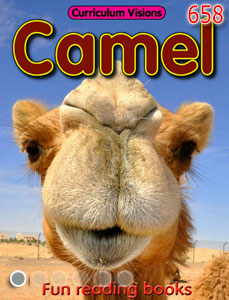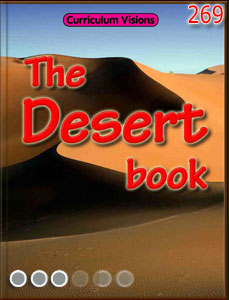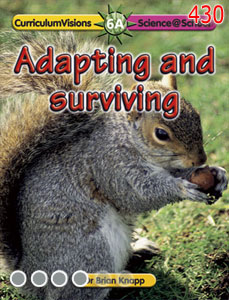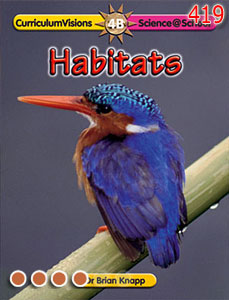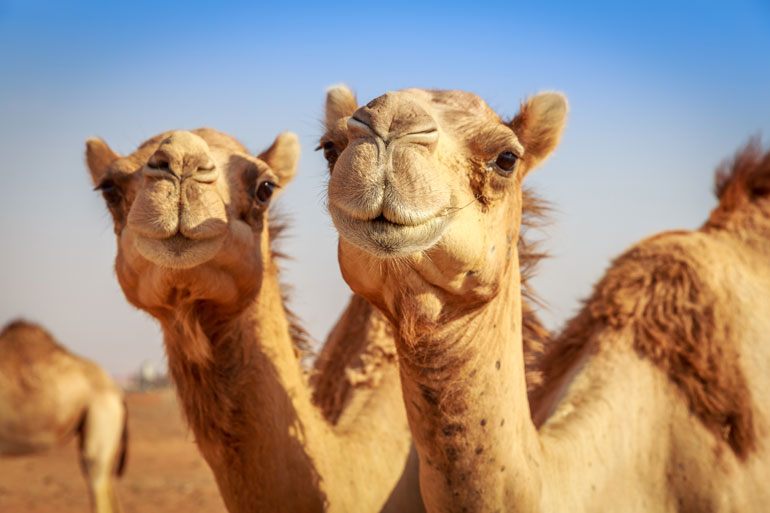A camel is a plant-eating animal that is well adapted to living in dry conditions where both food and water may be difficult to come by. There are two kinds of camel, and both have humps. The North African and Middle Eastern camel is a dromedary, and has one hump. The Asian camel is a bactrian camel and has two humps.
In both cases the humps are filled with fat that can be called upon as food if the camel cannot find anything to eat for a while. Having insulating fat on top of the body rather than all around the sides also means that camels do not overheat as easily as many other animals. A camel can drink 200L of water in three minutes. But when camels eat green food they can get enough moisture from that food, so that normally they do not need to drink at all.
The camel also has special broad toes to help stop it sinking into the sand.
